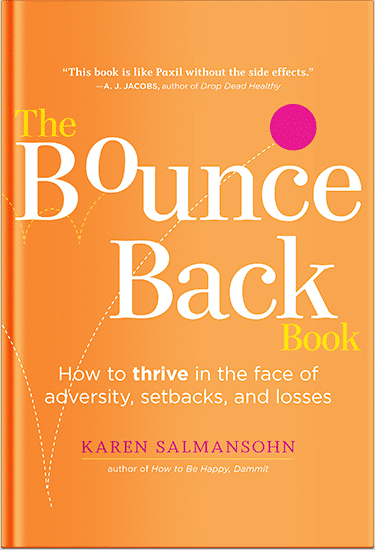 For others, breast reconstruction is just recovery from mastectomy. It helps with body confidence and closure from the difficult process. While the choice is individual, a straightforward direction makes it more reasonable. The entire process – from initial consultation to complete recovery – can be less intimidating when described in clear terms.
For others, breast reconstruction is just recovery from mastectomy. It helps with body confidence and closure from the difficult process. While the choice is individual, a straightforward direction makes it more reasonable. The entire process – from initial consultation to complete recovery – can be less intimidating when described in clear terms.
From all around various cities, such as Los Gatos, the reconstruction process is really physical and emotional healing. Some patients begin early following a mastectomy, while others do not. Either way, preparation for what lies ahead abolishes fear. In this article, we describe what occurs at every stage so patients feel more informed, ready, and confident in their decision.
Step 1: The Initial Consultation
The process starts with a consultation. The surgeon will review your medical background, discuss any upcoming treatments, and do a physical exam. You may be asked about past surgeries or medications. This helps them create a plan that suits your health needs.
You’ll also be asked about your goals. Some want to restore shape. Others want to reduce visible scarring. Your input helps guide the approach.
Don’t hesitate to ask questions. Talk about recovery, the timeline, and any follow-up needs. Open conversation helps create a plan that fits you well.
Step 2: Choosing the Right Procedure
Reconstruction isn’t one-size-fits-all. Your surgeon will recommend a method based on your health, body type, and preferences. Experts performing breast reconstruction surgery in Los Gatos say there are two main options are implant-based reconstruction and tissue-based (also called flap) reconstruction.
Implant-based uses saline or silicone implants. It’s usually a shorter surgery with a faster recovery. Flap reconstruction uses tissue from your own body, like the abdomen or back. It may take longer to heal, but it often looks and feels more natural. So, look for clinics that offer both options. Specialists there focus not only on restoring shape but also on preserving balance and natural movement. While the approach varies, the goal stays the same—safe, lasting results.
Step 3: Planning Around Cancer Treatment
Timing matters. If you’re still undergoing treatment, reconstruction may need to wait. Radiation or chemotherapy can affect how and when surgery is done. Your oncology and surgical teams will coordinate to ensure the plan fits your full medical needs.
Some people have reconstruction at the same time as their mastectomy. Others wait until all treatments are complete. There’s no one right timeline. What’s important is that the plan supports both recovery and health.
Step 4: What Surgery Day Looks Like
Once your surgery is scheduled, the clinic will give you clear instructions. You’ll likely need someone to drive you to and from the facility. Most procedures are done under general anesthesia and may last a few hours, depending on the method used.
The surgical team will check in with you beforehand, confirm the plan, and answer last-minute questions. After surgery, you’ll be moved to a recovery room for monitoring. Some patients go home the same day, while others stay overnight.
Step 5: Early Recovery and Healing at Home
The first two weeks are all about rest and healing. You may wear a support bra or surgical garment. Activity will be limited. Expect some swelling, soreness, and bruising. Medication is provided to manage discomfort.
Your surgeon will give you aftercare instructions—how to clean the area, when to follow up, and what signs need attention. These steps help reduce complications and ensure healing moves in the right direction.
Patience helps here. While the area may not look how you expect right away, improvements come gradually.
Step 6: Long-Term Recovery and Follow-Up
Healing doesn’t stop after two weeks. For many, the full recovery can take several months. Over time, swelling goes down, scars soften, and the shape settles. You’ll attend follow-up visits so the surgeon can check your progress.
Some patients need additional procedures later, especially if they had delayed reconstruction or want adjustments for symmetry. Others may explore options like nipple reconstruction or tattooing.
Emotional support is also part of long-term care. Body image and confidence take time to rebuild. Talking to a counselor or joining a support group can make a real difference.
Conclusion
Understanding each step of the breast reconstruction process can bring a sense of control to a time that often feels uncertain. The right care team will walk with you from consultation to recovery, helping you feel supported at every stage.
Thinking about your options? Book a consultation with a specialist who prioritizes safety, clarity, and results that reflect your goals.
P.S. Before you zip off to your next Internet pit stop, check out these 2 game changers below - that could dramatically upscale your life.
1. Check Out My Book On Enjoying A Well-Lived Life: It’s called "Your To Die For Life: How to Maximize Joy and Minimize Regret Before Your Time Runs Out." Think of it as your life’s manual to cranking up the volume on joy, meaning, and connection. Learn more here.
2. Life Review Therapy - What if you could get a clear picture of where you are versus where you want to be, and find out exactly why you’re not there yet? That’s what Life Review Therapy is all about.. If you’re serious about transforming your life, let’s talk. Learn more HERE.
Think happier. Think calmer.
Think about subscribing for free weekly tools here.
No SPAM, ever! Read the Privacy Policy for more information.
One last step!
Please go to your inbox and click the confirmation link we just emailed you so you can start to get your free weekly NotSalmon Happiness Tools! Plus, you’ll immediately receive a chunklette of Karen’s bestselling Bounce Back Book!


 For others, breast reconstruction is just recovery from mastectomy. It helps with body confidence and closure from the difficult process. While the choice is individual, a straightforward direction makes it more reasonable. The entire process – from initial consultation to complete recovery – can be less intimidating when described in clear terms.
For others, breast reconstruction is just recovery from mastectomy. It helps with body confidence and closure from the difficult process. While the choice is individual, a straightforward direction makes it more reasonable. The entire process – from initial consultation to complete recovery – can be less intimidating when described in clear terms.